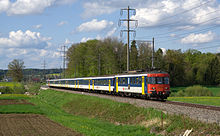| Rheinfall Railway | |||||||||||||||||||||||||||||||||||||||||||||||||||||||||||||||||||||||||||||||||||||||||||||||||||||||||||||||||||||||||||||||||||||||||||||||||||||||||||||||||||||||||||||||||
|---|---|---|---|---|---|---|---|---|---|---|---|---|---|---|---|---|---|---|---|---|---|---|---|---|---|---|---|---|---|---|---|---|---|---|---|---|---|---|---|---|---|---|---|---|---|---|---|---|---|---|---|---|---|---|---|---|---|---|---|---|---|---|---|---|---|---|---|---|---|---|---|---|---|---|---|---|---|---|---|---|---|---|---|---|---|---|---|---|---|---|---|---|---|---|---|---|---|---|---|---|---|---|---|---|---|---|---|---|---|---|---|---|---|---|---|---|---|---|---|---|---|---|---|---|---|---|---|---|---|---|---|---|---|---|---|---|---|---|---|---|---|---|---|---|---|---|---|---|---|---|---|---|---|---|---|---|---|---|---|---|---|---|---|---|---|---|---|---|---|---|---|---|---|---|---|---|---|
 Bridge carrying the Rheinfall railway over the Rhine above the Rhine Falls Bridge carrying the Rheinfall railway over the Rhine above the Rhine Falls | |||||||||||||||||||||||||||||||||||||||||||||||||||||||||||||||||||||||||||||||||||||||||||||||||||||||||||||||||||||||||||||||||||||||||||||||||||||||||||||||||||||||||||||||||
| Overview | |||||||||||||||||||||||||||||||||||||||||||||||||||||||||||||||||||||||||||||||||||||||||||||||||||||||||||||||||||||||||||||||||||||||||||||||||||||||||||||||||||||||||||||||||
| Native name | Rheinfallbahn | ||||||||||||||||||||||||||||||||||||||||||||||||||||||||||||||||||||||||||||||||||||||||||||||||||||||||||||||||||||||||||||||||||||||||||||||||||||||||||||||||||||||||||||||||
| Owner | Swiss Federal Railways (SBB CFF FFS) | ||||||||||||||||||||||||||||||||||||||||||||||||||||||||||||||||||||||||||||||||||||||||||||||||||||||||||||||||||||||||||||||||||||||||||||||||||||||||||||||||||||||||||||||||
| Locale | Switzerland | ||||||||||||||||||||||||||||||||||||||||||||||||||||||||||||||||||||||||||||||||||||||||||||||||||||||||||||||||||||||||||||||||||||||||||||||||||||||||||||||||||||||||||||||||
| Termini | |||||||||||||||||||||||||||||||||||||||||||||||||||||||||||||||||||||||||||||||||||||||||||||||||||||||||||||||||||||||||||||||||||||||||||||||||||||||||||||||||||||||||||||||||
| History | |||||||||||||||||||||||||||||||||||||||||||||||||||||||||||||||||||||||||||||||||||||||||||||||||||||||||||||||||||||||||||||||||||||||||||||||||||||||||||||||||||||||||||||||||
| Opened | 16 April 1857 | ||||||||||||||||||||||||||||||||||||||||||||||||||||||||||||||||||||||||||||||||||||||||||||||||||||||||||||||||||||||||||||||||||||||||||||||||||||||||||||||||||||||||||||||||
| Technical | |||||||||||||||||||||||||||||||||||||||||||||||||||||||||||||||||||||||||||||||||||||||||||||||||||||||||||||||||||||||||||||||||||||||||||||||||||||||||||||||||||||||||||||||||
| Line length | 29.92 km (18.59 mi) | ||||||||||||||||||||||||||||||||||||||||||||||||||||||||||||||||||||||||||||||||||||||||||||||||||||||||||||||||||||||||||||||||||||||||||||||||||||||||||||||||||||||||||||||||
| Track gauge | 1,435 mm (4 ft 8+1⁄2 in) | ||||||||||||||||||||||||||||||||||||||||||||||||||||||||||||||||||||||||||||||||||||||||||||||||||||||||||||||||||||||||||||||||||||||||||||||||||||||||||||||||||||||||||||||||
| Electrification | 15 kV 16.7 Hz AC supplied by overhead line | ||||||||||||||||||||||||||||||||||||||||||||||||||||||||||||||||||||||||||||||||||||||||||||||||||||||||||||||||||||||||||||||||||||||||||||||||||||||||||||||||||||||||||||||||
| Maximum incline | 1.4% | ||||||||||||||||||||||||||||||||||||||||||||||||||||||||||||||||||||||||||||||||||||||||||||||||||||||||||||||||||||||||||||||||||||||||||||||||||||||||||||||||||||||||||||||||
| |||||||||||||||||||||||||||||||||||||||||||||||||||||||||||||||||||||||||||||||||||||||||||||||||||||||||||||||||||||||||||||||||||||||||||||||||||||||||||||||||||||||||||||||||



The Rheinfall Railway (German: Rheinfallbahn) is a railway line in Switzerland. The line links Winterthur in the canton of Zurich with Schaffhausen in the canton of Schaffhausen. The Rheinfall Railway was constructed by the independent Rheinfallbahn-Gesellschaft.
Towards its northern end, the Rheinfall Railway crosses the Rhine on a viaduct adjacent to the famous Rhine Falls, from which it takes its name.
History
The Rheinfallbahn-Gesellschaft was founded in 1853 by the Schaffhausen industrialist Heinrich Moser. Construction of the line commenced in 1855, and it was opened on 16 April 1857. The section of line between Andelfingen and Schaffhausen proved particularly difficult and costly to build, including as it needed major bridges across the rivers Rhine and Thur, together with a tunnel under Laufen Castle.
The Swiss Northeastern Railway (NOB) acquired the Rheinfallbahn-Gesellschaft on 4 November 1856 prior to the line's opening, providing connections to Zurich and beyond. In 1902, the NOB became part of the Swiss Federal Railways (SBB CFF FFS), who retain ownership of the line.
Until 1897, the Rheinfall railway provided the main railway route between Schaffhausen and the rest of Switzerland. However in that year the Eglisau to Neuhausen line opened, providing a shorter route to Zurich via Bülach that is now used by all long distance trains.
The line was electrified on 11 April 1943. In 2007 its 150th anniversary was celebrated by the operation of historic steam trains over the line.
Operation
Today the Rheinfall Railway is served by two lines of the Zurich S-Bahn. The S16 provides an hourly through service between Zurich and Schaffhausen, with only limited stops on the Rheinfall railway section of its route. The S33 links Winterthur and Schaffhausen twice an hour, stopping at all intermediate stations.
The northernmost section of the line, between Neuhausen and Schaffhausen, also carries all the traffic using the Eglisau to Neuhausen railway line, including most long distance trains between Schaffhausen and the rest of Switzerland, together with Zurich S-Bahn line S22 from Bülach to Schaffhausen, until the December 2015. Since the timetable change of 2015 the S9 from Uster to Schaffhausen, took over the part of S22, between Bülach and Schaffhausen.
The line is predominantly single track with passing loops at stations, although there are double track sections between Hettlingen and Henggart, in the Marthalen area, and between Neuhausen and Schaffhausen. It is 30.45 kilometres (18.92 mi) long, standard gauge and electrified at 15 kV 16.7 Hz AC supplied by overhead line.
The S-Bahn service over the single-track railway south of Neuhausen leaves little room for other trains, and most freight and long-distance passenger services use alternative routes.
References
- Eisenbahnatlas Schweiz [Swiss railway atlas]. Schweers + Wall. 2012. pp. 3–5. ISBN 978-3-89494-130-7.
- ^ Eisenbahnatlas Deutschland. Verlag Schweers + Wall GmbH. 2009. pp. 110–111. ISBN 978-3-89494-139-0.
- ^ Eisenbahnatlas Schweiz. Verlag Schweers + Wall GmbH. 2012. pp. 4–5. ISBN 978-3-89494-130-7.
- ^ "S-Bahn trains, buses and boats" (PDF). ZVV. Archived from the original (PDF) on 2012-01-31. Retrieved 2012-01-09.
Bibliography
- Eberhard, Jules (1957). Hundert Jahre Rheinfallbahn, 1857–1957. Jubiläumsschrift [One hundred years of the Rheinfall Railway, 1857–1957. Anniversary publication] (in German).
External links
 Media related to Rheinfall Railway at Wikimedia Commons
Media related to Rheinfall Railway at Wikimedia Commons- Video of 150th anniversary, from YouTube